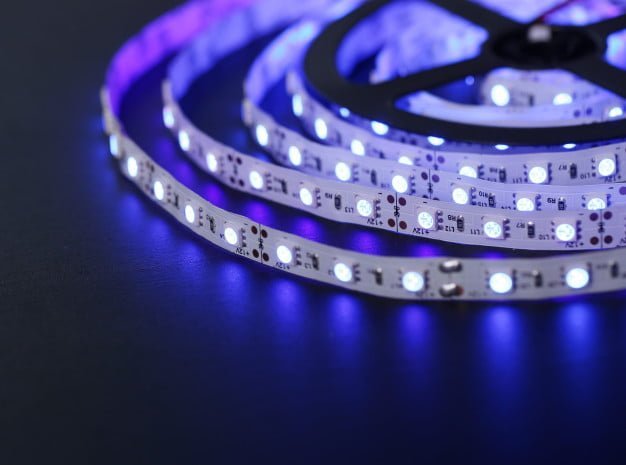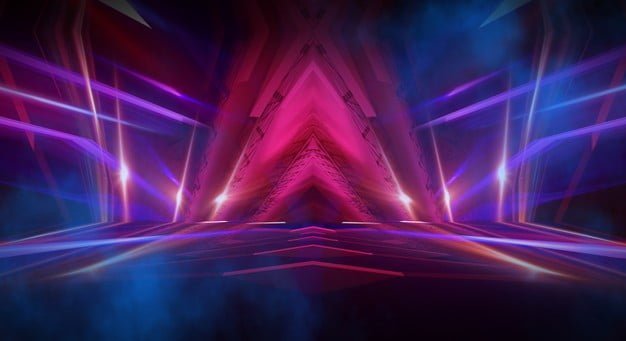Conventional Lighting Methods And Their Applications
by Abdul Aziz Mondal Technology Published on: 27 April 2021 Last Updated on: 27 December 2024

Though artificial electronic devices’ innovation has primarily occurred in the late nineteenth century, LEDs have led to a complete revolution in that regard.
LEDs have not only been the game-changer in semiconductor electronics, but they have also led to the development of artificial lighting systems. It is worth a revolution as electrical consumption has been minimized and electronics regulation has improved performance.
Light-emitting diodes are some of the most effective solutions that offer quality display and performance even in total darkness. They not only provide high visibility, but it also lasts long for a period of more than 100k hours. The LED displays are prepared in a customized way that can suit your application.
LED is the future of lighting that uses moldable optical silicone material to produce excellent designs with comprehensive features and applications. The customization of LED includes different points that are discussed below. Silicone is considered the best material for designing LEDs due to exceptional material elasticity and molding power. Various LED customizations are discussed below.
LED Display customization:
The display of LEDs has been tailor-made to suit the requirements of a wide range of people and applications. Let us zero in on some of the pertinent display customizations here.
Size:
The display of an LED can be customized depending upon the device’s purpose and requirement.
Color:
A wide range of colors is available in custom LED solutions. Colors can be chosen depending upon the customer’s demand and requirement.
Overlay:
Icon details are visible if the overlay is designed over the reflector face. Once the overlay is designed accurately, the elements can be seen in total darkness.
Pinout:
The pinout characteristic of an LED is different in all the display systems. The difference in the pinout of LED is due to the circuit board design, which can vary from customer to customer.
Electrical Configuration:
Electrical configuration in LED displays is an additional feature that allows you to connect various data inputs such as pen drive, USB cable, and data cable rather than connecting to a computer.
Optical Uniqueness:
For offering a uniform display, the light output is usually optimized. This helps in matching the intensity, color, and wavelength of the LED simultaneously.
LED categories:
All the LED products comprise different characteristics of standard quality and cost-effectiveness that can be used both for commercial as well as residential purposes. The LED technology is categorized under various categories. The categories are discussed below.
1. Surface Mount LED:
This class of LED display is suitable for signal indicators, backlight, and digital display applications.
2.Top LED:
TOP light-emitting diodes are a category of LED displays appropriate for general lighting products and equipment. This is a low heat resistant product that can be used majorly in commercial areas.
3. High power LED:
As the name suggests, this type of LED uses low DC operating voltage. Further, it also produces high-efficiency output, which is beneficial for outdoor lighting and automobile lightings.
4. COB:
COB provides excellent heat conductivity with increased light efficiency.
Types of conventional lighting methods:
Depending upon the components and characteristics of a LED display system, these can be differentiated into two categories.
Ultraviolet LEDs:

As the name suggests, Ultraviolet LEDs can be widely used for destroying microorganisms that are not visible through naked eyes. As UV light possesses a lesser wavelength, the high energy emitted through them can effectively destroy harmful cells and bacteria. Several harmful effects are produced by ultraviolet LED, but UV LED has progressed tremendously in the last decade.
The demand for eco-friendly LEDs has recently increased, and due to this, the light-emitting diode has replaced the mercury lamps. UV LED is mainly preferred over any other LED as it consumes less power as compared to any other device.
Further, an ultraviolet LED exhibits tight tolerance of wavelengths and has exceptionally long battery life. Lastly, due to its eco-friendly nature, LED is widely used for industrial purposes.
Infrared LEDs:
With technical advancements, the infrared LED has a wide range of applications that can be used for outdoor purposes, such as remote control devices, CCTV, and traditional home purposes.
Further, it can also be used in healthcare organizations for monitoring health vitals in patients with different diseases. Different IR LEDs produce infrared light of different wavelengths ranging from 700nm to 1mm wavelength.
Materials such as gallium arsenide and aluminum arsenide are used both for IR receivers and IR sensors. Similar to any other LED, IR LEDs are precisely the same in appearance.
Still, as human eyes are incapable of observing infrared rays, they cannot identify if the device is working or not. The IR LEDs operate on a simple principle consisting of an emitter circuit and receiver circuit, jointly known as optocoupler.
LED features and Applications:
With moldable optical elastomers, the conventional lighting methods have extraordinary features and benefits that cannot be overlooked. Different features and applications are discussed below.
- The silicone material used in the LEDs provides extensive flexibility and mold replication, making it highly resistant to scratches, cracks, and vibrations.
- LEDs are user and environment-friendly; hence, they can also be used in high humidity and high heat conditions.
- With technical innovations, the cost of manufacturing is reduced to a greater extent.
- The UV wavelength has wide application in the medical field, UV inkjet printing, and UV curing. UV LED is more often used in treating skin infections that cannot be treated using antifungal and antiviral tablets.
- Infrared LED chips can be suitably used in remote controllers due to their wavelength. Further, LEDs with this range of wavelength can also be home appliances.
- Banks also utilize IR LEDs for card reader systems.
Conclusion:
As compared to traditional forms of lighting, the conventional lighting methods produce a lifespan of more than 100000 hours which is 3-4 times more fluorescent than any other lighting.
Unlike big incandescent lamps and devices, the custom LED solutions are physically smaller in size and feature a high portability level. They can be effortlessly transported from one place to another for commercial use.
Due to their physically small size, LEDs have incredible applications that can be used in circuit board lighting and traffic signals. LEDs are available in inclusive patterns ranging from warmer and cooler shades that can suit the environment.
Further, as LEDs are semiconductors, they can be dimmed with controllers that provide step-level dimming. The materials used in preparing LEDs offer high durability and resistance that do not allow the devices to break easily.



































































































